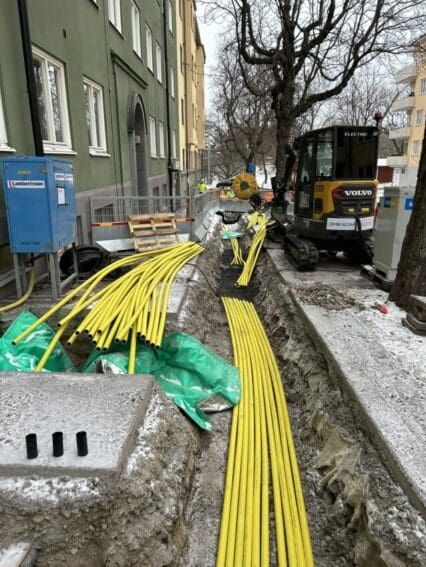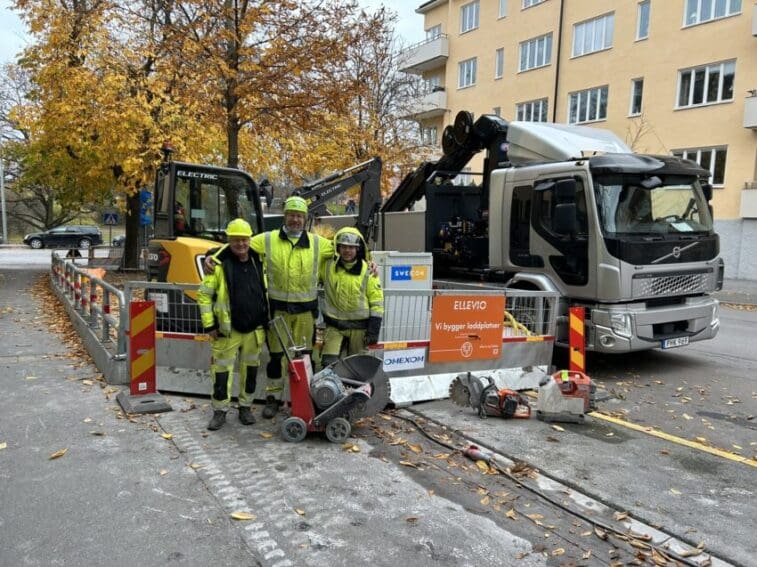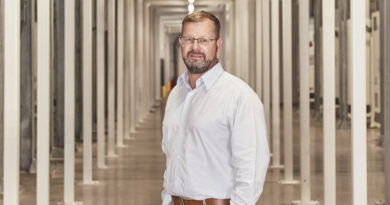Why we need to use electric to build electric
Gustav Boberg, segment leader, at Volvo Construction Equipment explains why it is important to use electric construction equipment to build the electric charging infrastructure our society needs. And why failing to do so is a missed opportunity.
There is a great opportunity to build charging points for EVs using electric machines and tools. Sales of electric cars are soaring and countries are scrambling to catch up and build the charging points necessary to facilitate their use. Whilst this is all great news, there is the potential for CO₂ reductions even before the chargers are switched on. How? By building these charging points using zero emission machines, which are available and in use today. When you think about it, it’s crazy not to.
The latest figures from the European Alternative Fuel Observatory (EAFO) show that by the end of 2023, the EU had over 630,000 public charging points. The goal is for 1.3 million by 2025 and 2.9 million by 2030.
Last year the EU agreed on new laws as part of its Fit for 55 Package that will expand access to fast EV charging networks across its main arterial road network, with at least 400kW total capacity – and at least one 150kW charger – every 60km by 2026. For truck and bus charging, the ambition is charging points every 120km.
It’s a similar story across the Atlantic, where there are over 60,000 charging stations in North America and Canada and a commitment by government of $623 million in grants to continue building out the EV charging network. Clearly there’s a significant ramp up in the rollout of charging infrastructure coming – on streets, in cities and on motorways – and with it a huge opportunity to build these the right way, with zero exhaust emission solutions.
There are zero emission electric machines available today and in use at worksites across the globe. And they are being used by forward-thinking organisations that are committed to reducing their carbon footprint.
Practising what they preach
That’s exactly what Ellevio, one of Sweden’s largest energy companies, has started to explore. With an ambition for all construction projects to be electrified by 2030, starting with the construction of charging points makes perfect sense. In 2023, the company built around 150 charging streets. One of these, in central Stockholm, was a test case using only electric products and solutions.
Whilst 70% of EV charging in Europe is done at home, public charge points are needed to complement this, as well as workplace charging. Ellevio partnered with Volvo CE as well as Volvo Trucks, Swecon, City of Stockholm, Qwello, Omexom, Husqvarna, Lambertsson and Swepac to install on-street charging with almost no particulate or CO₂ emissions thanks to the use of electric vehicles and tools.
A Volvo ECR25 Electric excavator – from our growing range of commercially available electric construction machines – was used for digging the narrow, shallow trenches required for the electric cabling. With diesel machines, 70-95% of the total carbon footprint comes when the machine is running. An electric machine meanwhile produces no emissions during the use phase.

What’s more, the compact dimensions and near silent operation of the ECR25 Electric made it a perfect solution in this residential neighbourhood with its steady flow of pedestrians, school children and vehicles. In fact, electric machines are ideal for inner city and urban construction projects, where many of these charging facilities are needed the most.
Karoline Viksten, head of sustainability at Ellevio, told us that the company feels a responsibility to mitigate the “major negative impact we have on the climate, because we build infrastructure”. Ellevio is working to reduce its direct and indirect greenhouse gas emissions and that’s where electric machines come in. It wants to test new solutions, learn more and drive development.
During the project, a Volvo FE Electric truck with crane provided extra power to tackle a variety of different tasks and to take material away from the site. Other electric equipment included a high-power battery disc cutter, electric floor saw and electric tamper. For this use case, we were able to use electricity directly from the grid via a connection box which had several different outputs. We then had a DC fast charger which we used to charge the ECR25 Electric. An extension cord provided even more flexibility to charge the machine wherever it was on site. The connection box was used to charge the electric tools. Connecting directly to the grid is the ideal set up as it provides opportunities for DC fast charging at the jobsite and is convenient for operators. It is also likely to be widely available in inner city and urban areas, where many of these types of projects to install EV chargers are needed.
Reducing carbon, reducing costs
In total, using electric machines and tools rather than comparative diesel-powered units on this project is estimated to have saved 2.3 tonnes of CO₂ being emitted into the environment. Added to this, there are cost savings for using electricity over diesel.
Imagine what the CO₂ savings could be if we were to build the huge number of charging stations that we need in this same way. The impact would be substantial.
What is also clear to see is that we have the most impact when we collaborate with others in the value chain – with energy providers, businesses, utility companies, and of course local authorities. Together we can lead by example and provide a roadmap for others who want to join us and make the most of this opportunity we have to build EV infrastructure in a more sustainable way, by using electric solutions.






